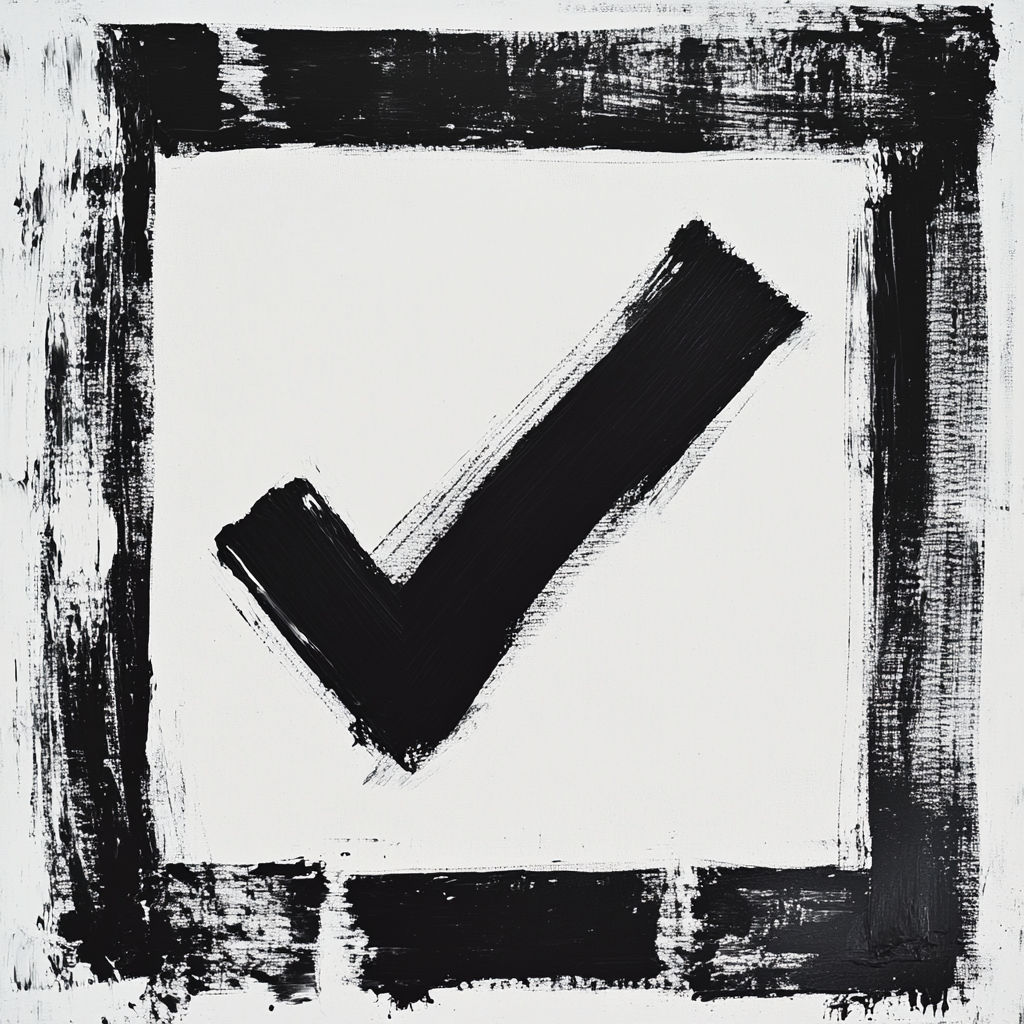Introduction to Antique Cash Register Values
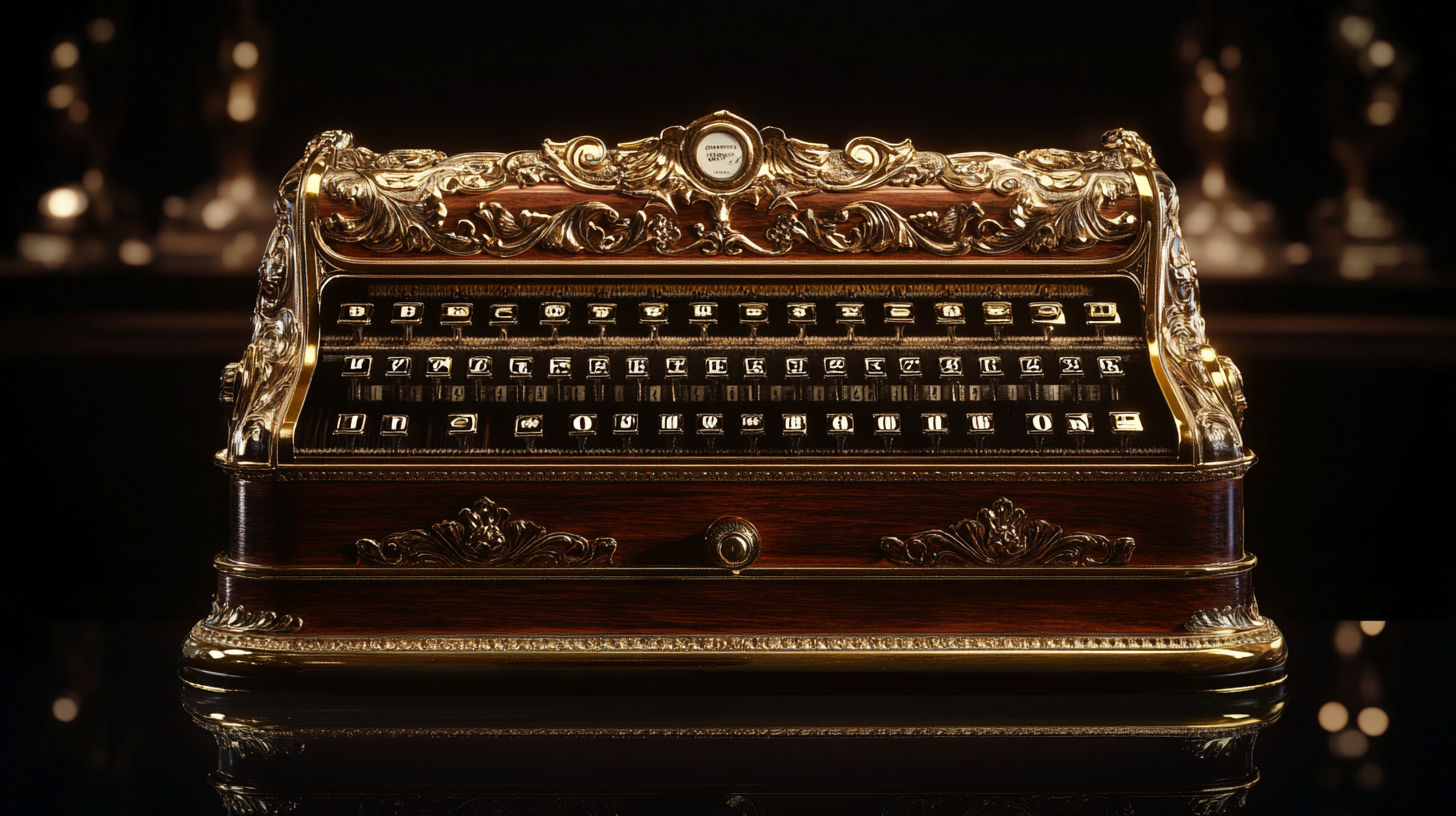
In this comprehensive guide, we’ll explore the factors that influence antique cash register values, provide identification tools for major manufacturers and models, examine current market trends, and offer insights into buying, selling, and restoring these mechanical marvels. Whether you’ve discovered an old register in an estate or are actively building a collection, understanding these factors will help you navigate the market with confidence.
Antique Cash Register Market Snapshot
The Evolution of Cash Registers: Historical Context
Cash Register Historical Timeline
First Cash Register Patent
James Ritty, a saloon owner from Dayton, Ohio, patents the "Incorruptible Cashier" after witnessing a tool that counted ship propeller revolutions. This early machine simply recorded sales to prevent employee theft.
National Cash Register Company Founded
John H. Patterson purchases Ritty's patent and founds the National Cash Register Company (NCR), which would dominate the industry for decades. Early NCR models featured ornate brass casings and wood cabinetry.
The Golden Age of Brass Registers
This period saw the production of the most elaborate and decorative registers, with intricate brass detailing, marble surfaces, and ornate woodwork. Models from this era are among the most valuable today.
Art Deco Influence
Cash registers from this period reflect Art Deco design elements with streamlined forms, nickel plating, and more modernist aesthetics. Electric models begin to appear alongside mechanical ones.
Transition to Modern Registers
The shift to electronic components begins. Late mechanical registers from this period are less ornate but still hold collector value as the end of an era.
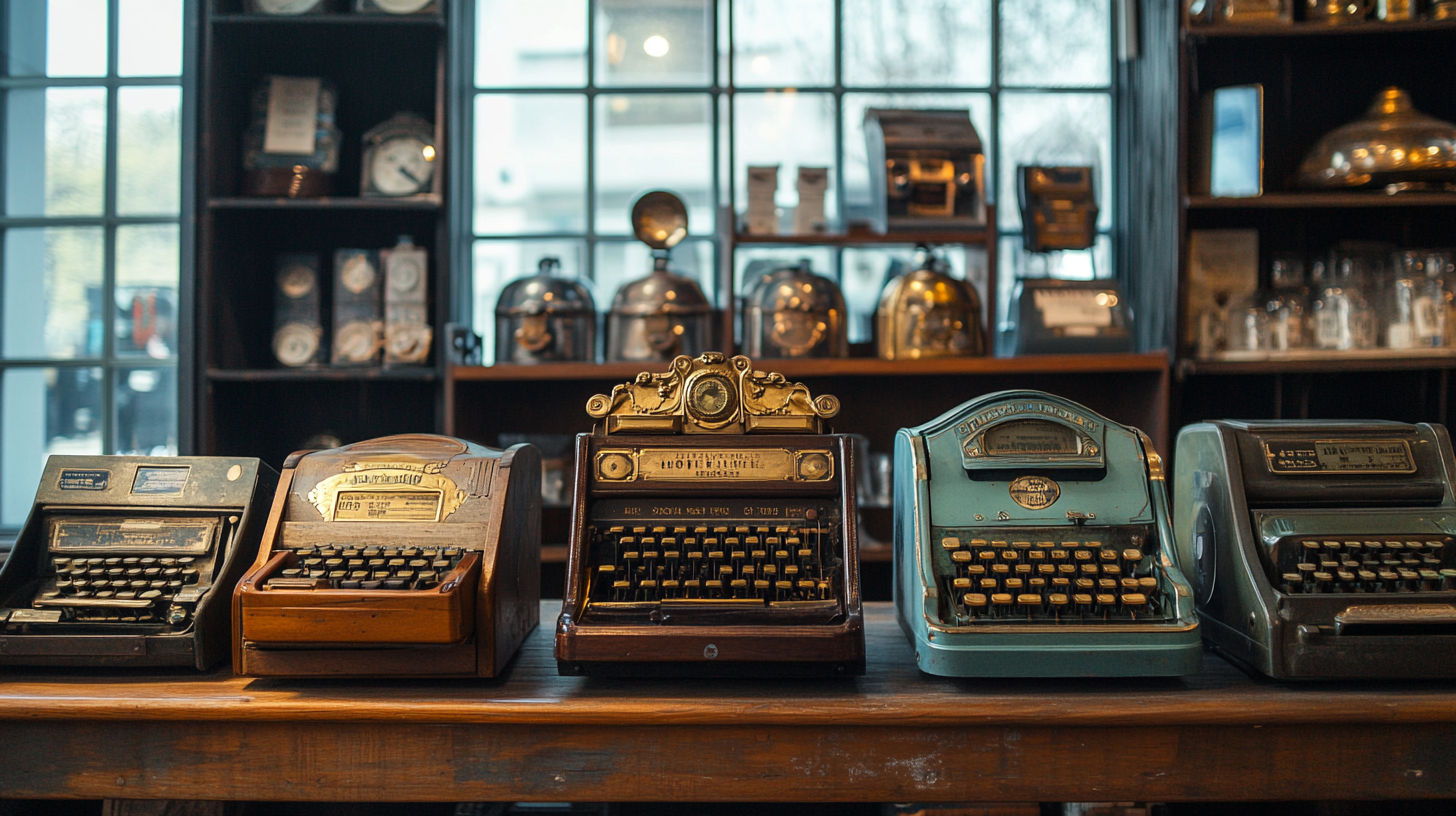
Identifying Valuable Antique Cash Registers
Identifying NCR Models
The model number and serial number are crucial for identifying NCR cash registers and determining their value. According to the HBAC Group, a leading authority on cash register restoration:
“The model is the key to what your register is. The model number and serial number are usually located on a tag on the front of the machine. Before 1909, registers were either a one- or two-digit model number, for example, model 2, 50, 92.”
Early model numbers (1-100) typically indicate registers from the late 19th to early 20th century, which often command premium prices due to their ornate design and historical significance.
Key Identification Elements
Cash Register Identification Checklist
Major Cash Register Types by Era
Early Brass Era (1880s-1910s):
- Characterized by ornate brass casings with detailed scrollwork
- Often feature marble or wood accents
- Typically have mechanical total indicators or “amount purchased” displays
- Models from this era include NCR Model 313, 332, and 442
Nickel-Plated Era (1910s-1930s):
- Transitional period featuring nickel-plated casings
- Art Nouveau and early Art Deco design elements
- More sophisticated mechanical functions
- Popular models include NCR 562, 452, and 700 series
Art Deco and Modern Era (1930s-1950s):
- Streamlined designs with less ornamentation
- Combination of mechanical and early electric features
- Examples include NCR Class 1000 and 2000 series
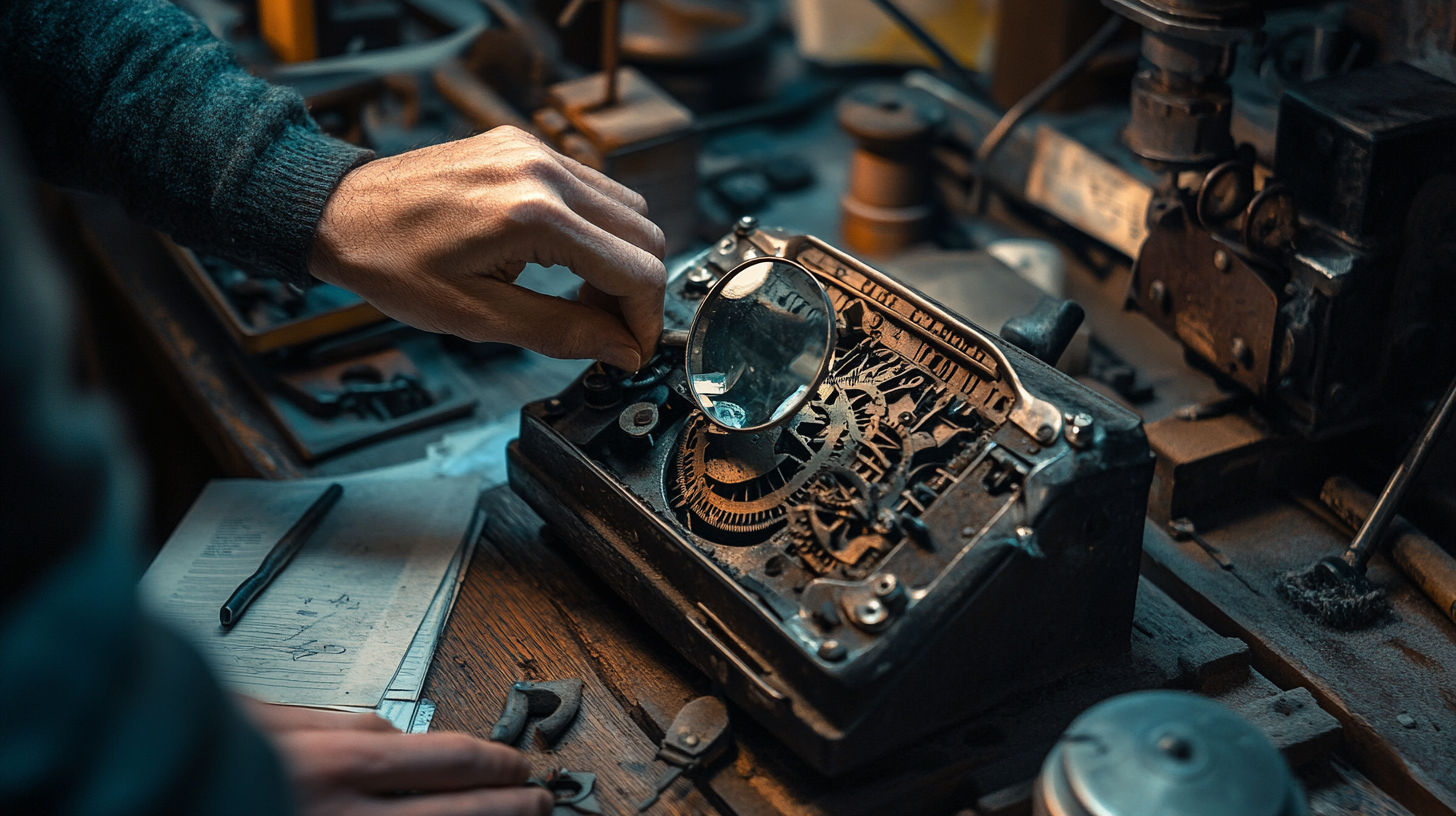
Factors Affecting Antique Cash Register Values
Age and Manufacturer
Generally, older registers command higher prices, particularly those from the late 19th and early 20th centuries. National Cash Register (NCR) models typically bring premium prices compared to lesser-known manufacturers, though rare models from competitors can still be valuable.
Condition
Condition is perhaps the most critical factor affecting value. Registers in working mechanical condition can be worth 30-40% more than non-functioning examples. Original finishes (brass, nickel, bronze) significantly impact value, while heavily restored or repainted models may see reduced collector interest.
Rarity and Design
Ornate models with elaborate detailing, especially those featuring detailed brass scrollwork, marble surfaces, or unusual design elements, command higher prices. Limited production models or those with unique features are particularly sought after by serious collectors.
Completeness
Original components increase value substantially. This includes:
- Original keys and drawer
- Amount purchased indicators
- Receipt printers (if originally included)
- Original finish without significant restoration
- Original wood cabinets or marble surfaces
Size and Functionality
Larger, more complex registers with multiple functions generally bring higher prices than simpler models. Features that can enhance value include:
- Multiple drawers
- Receipt printing capability
- Multiple clerk keys or tracking systems
- Specialized functions for particular businesses
Antique Cash Register Value Ranges
| Category | Price Range | Notes |
|---|---|---|
| Early Brass Era NCR (1880s-1910s) | $1,200-$5,000+ | Working condition with original finish commands premium |
| Nickel-Plated NCR (1910s-1930s) | $800-$3,000 | Art Deco models particularly desirable |
| Candy Store/Barber Shop Registers | $500-$1,500 | Smaller specialized registers for specific businesses |
| Post-War Mechanical (1940s-1950s) | $200-$800 | Less ornate but still collectible |
| Non-NCR Manufacturers | $100-$1,200 | Varies widely based on rarity and condition |
Note: Price ranges are approximate and can vary based on condition, rarity, and market demand.
Recent Auction Results and Market Trends
According to 1stDibs, “Prices for vintage and antique cash registers made by the National Cash Register Company often begin at around $1,000 and can go for more than $5,000.” This aligns with our research across multiple platforms.
Notable Recent Antique Cash Register Sales
| Item | Price | Date | Auction House |
|---|---|---|---|
| National Cash Register Model 313 (Brass) | $3,168 | March 2024 | Christie's |
| NCR Model 452 Art Deco Register | $3,000 | October 2023 | Aardvark Antiques |
| National Cash Register Model 332 | $2,561 | January 2025 | 1stDibs |
| Candy Store Register (Small Brass) | $875 | November 2024 | eBay |
| Non-Working Brass NCR (For Restoration) | $450 | February 2025 | Local Auction |
Note: Auction results represent past sales and may not reflect current market values. Always consult with a professional appraiser for accurate valuations.
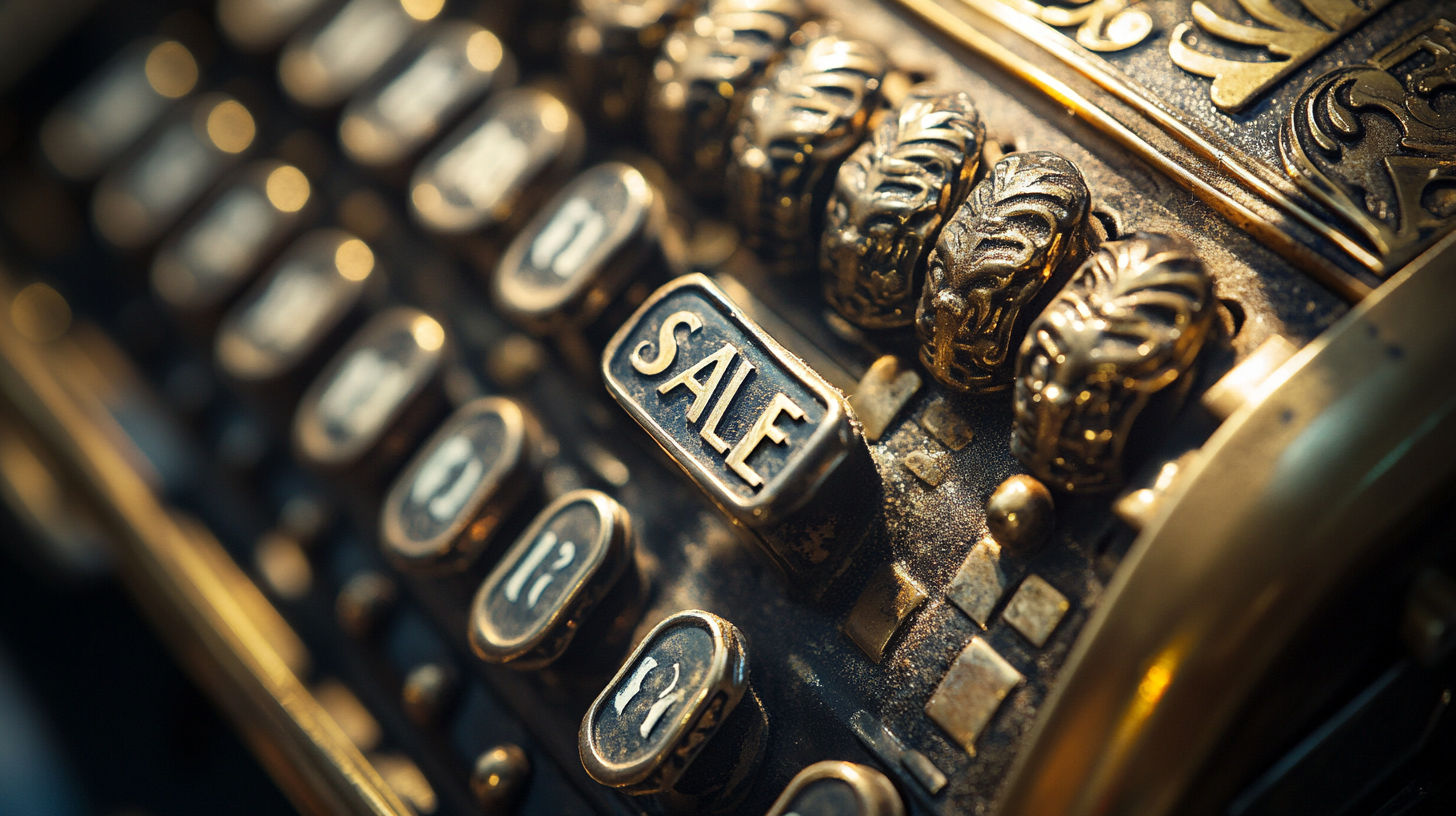
Buying and Collecting Antique Cash Registers
Where to Find Antique Cash Registers
- Specialized Dealers: Companies like Aardvark Antiques offer authenticated pieces with known provenance.
- Online Marketplaces: eBay has a dedicated collectible cash registers category with diverse offerings.
- Auction Houses: Both traditional and online auctions through Invaluable provide access to higher-end models.
- Antique Shows and Flea Markets: Occasionally yield discoveries, though condition assessment is crucial.
- Estate Sales: Often good sources for untouched examples from commercial estates.
Tips for Collectors
- Start with research: Familiarize yourself with models and values before purchasing.
- Focus on condition: Working mechanisms command significant premiums.
- Verify authenticity: Check serial numbers and model numbers against known references.
- Consider display space: These machines are substantial - ensure you have appropriate space.
- Evaluate restoration needs: Factor restoration costs into your purchasing decision.
- Specialize if possible: Consider focusing on a specific era, type, or manufacturer.
- Join collector networks: Connect with other enthusiasts for knowledge sharing and potential trades.
Investment Potential
While collecting should primarily be driven by appreciation for these historical items, certain registers do have investment potential:
- Early brass models from the 1880s-1910s consistently maintain or appreciate in value
- Rare or unusual models with documented provenance offer strongest growth potential
- Working examples with original finish command premium prices
- Specialized registers made for specific businesses (candy stores, barber shops) have niche collector appeal
Restoration and Maintenance
Professional Restoration
According to the HBAC Group, “The HBAC Group has been restoring antique cash registers for over 30 years. We are the only business in the world that devotes 100 percent of our efforts to the restoration of antique cash registers.”
Professional restoration may include:
- Mechanical repair and adjustment
- Careful cleaning and polishing of metal components
- Refinishing of wooden elements
- Replacement of missing components with period-appropriate parts
- Documentation of the restoration process
DIY Maintenance
For regular maintenance, collectors can safely:
- Dust with a soft, dry cloth
- Apply a light coat of high-quality wax to brass surfaces (test in an inconspicuous area first)
- Lubricate moving parts sparingly with appropriate oils
- Clean glass elements with non-ammonia glass cleaner
- Monitor for signs of metal deterioration or wood damage
Restoration Considerations
Restoration Decision Guide

Displaying and Using Antique Cash Registers
Display Considerations
- Location: Place registers away from direct sunlight to prevent fading and damage to finish
- Support: Ensure display surfaces can handle the substantial weight (some registers exceed 100 pounds)
- Accessibility: Position to allow viewing of decorative elements while protecting from casual handling
- Context: Consider displaying with period-appropriate items or photographs for historical context
- Lighting: Use directed lighting to highlight brass details and decorative elements
Modern Uses
While primarily collectibles, antique cash registers can serve practical purposes:
- Conversation pieces in retail environments
- Functional decor in restaurants and bars with vintage themes
- Museum displays illustrating commercial history
- Film and television props for period productions
- Educational tools for demonstrating mechanical engineering principles
Caring for Displayed Registers
- Dust regularly with a soft cloth
- Maintain stable temperature and humidity levels
- Periodically operate mechanical components (if functional) to prevent seizing
- Apply appropriate protective finishes annually
- Secure against tipping or accidental damage in high-traffic areas
Online Resources and Community
Essential Antique Cash Register Resources
HBAC Group
The leading resource for cash register restoration and identification, offering comprehensive guides to model numbers and historical context.
Carter's Price Guide
Detailed price guide with auction results on vintage National and other cash registers with images and historical sales data.
1stDibs Antique Cash Register Collection
High-end marketplace featuring premium antique cash registers with detailed descriptions and pricing information.
eBay Collectible Cash Registers
The most active marketplace for cash registers across all price points, with new listings added regularly.
Invaluable Cash Register Auctions
Access to global auction house listings of cash registers with historical price data and upcoming sales.
Dr. Lori's Antique Cash Register Guide
Professional antiques appraiser's guide to identifying and valuing antique cash registers.
Online Forums and Communities
Several online communities cater to cash register collectors and enthusiasts:
- Reddit Antiques Community: Regular discussions about identifying and valuing cash registers
- Collector Forums: Specialized discussions about mechanical cash registers and their history
- Social Media Groups: Facebook and other platforms host collector groups where members share finds and information
- Auction Alert Services: Email notifications when cash registers matching specific criteria come up for auction
Common Questions About Antique Cash Register Values
How do I identify my vintage cash register?
To identify a vintage cash register:
1. Look for the model number and serial number tag typically located on the front of the machine
2. For National Cash Register (NCR) models, early registers (pre-1909) typically had one or two-digit model numbers
3. Check for manufacturer markings, often found on the drawer front or casing
4. Note the material (brass, nickel-plated, iron) and decorative elements
5. Count the number of clerk keys and drawer compartments
6. Photograph your register from multiple angles and consult with specialist dealers or the HBAC Group for assistance
The model number is the most important identifier for determining both the age and value of your cash register.
What is the most valuable type of antique cash register?
The most valuable antique cash registers are typically:
1. Early brass National Cash Register models from the 1880s-1910s, particularly elaborate models with marble surfaces and extensive decorative elements
2. Rare or limited production models with unusual features or specialized business applications
3. Models in excellent original condition with working mechanisms and minimal restoration
4. Cash registers with documented historical significance or provenance
Specific high-value models include the NCR Model 313 (brass), Model 332, and certain candy store registers with exceptional ornamentation. These can command prices from $3,000 to over $10,000 for museum-quality examples.
How much is my antique cash register worth?
The value of an antique cash register typically ranges from $100 to $5,000+, depending on several key factors:
- Age: Older models (pre-1920) generally command higher prices
- Manufacturer: National Cash Register (NCR) models typically bring premium prices
- Condition: Working mechanisms add 30-40% to value
- Original finish: Untouched original finishes are highly desirable
- Completeness: All original components present
- Rarity: Unusual models or those with limited production
For a specific valuation, consult a specialized dealer, auction house, or professional appraiser with expertise in antique cash registers. You'll need clear photographs and the model and serial numbers for an accurate assessment.
Who restores old cash registers?
Several specialists offer restoration services for antique cash registers:
1. The HBAC Group is widely recognized as the leading restorer, dedicating 100% of their business to cash register restoration
2. Some antique dealers specializing in commercial items offer restoration services
3. Independent mechanical restorers with cash register experience can be found in major cities
Professional restoration typically includes mechanical repair, cleaning and polishing of metal components, refinishing of wooden elements, and replacement of missing parts. Costs vary significantly based on the register's condition and required work, typically ranging from $500 to $2,500+ for comprehensive restoration.
For museum-quality or highly valuable registers, always choose a restorer with documented experience with your specific model.
What are old cash registers called?
Old cash registers are known by several names depending on their era and style:
- **Cash Register**: The standard general term
- **Till**: Sometimes used interchangeably, though technically referring to the money drawer
- **The Incorruptible Cashier**: The name of James Ritty's original patented model
- **National**: Colloquially used to refer to NCR models, which dominated the market
- **Bronze Beauty**: Nickname for ornate brass-era registers
- **Barber Shop Register** or **Candy Store Register**: Names for specialized smaller models
In collector circles, they're typically identified by their manufacturer and model number, such as "NCR Model 313" or "Michigan Model 6".
Are brass cash registers valuable?
Yes, brass cash registers are generally the most valuable category of antique registers. Factors that make brass registers particularly desirable include:
1. Age: Most brass registers date from the late 1800s through the 1910s, making them among the oldest
2. Craftsmanship: Featuring intricate cast and machined details with beautiful scrollwork
3. Aesthetic appeal: The warm gold tone and ornate details make them visually striking
4. Historical significance: Representing the golden age of retail expansion in America
Values for brass cash registers typically start around $800-$1,000 for basic models in fair condition and can exceed $5,000 for elaborate models with marble surfaces, original finish, and working mechanisms. The highest values are commanded by early National Cash Register models with exceptional ornamentation and documented provenance.
How can I sell my antique cash register?
Several options exist for selling antique cash registers:
1. **Specialized Dealers**: Companies like Aardvark Antiques purchase registers directly, offering convenience but typically at wholesale prices
2. **Auction Houses**: Traditional and online auctions can reach collectors but charge seller fees (typically 10-25%)
3. **Online Marketplaces**: eBay and 1stDibs allow direct sales to collectors, with varying fee structures
4. **Local Antique Shops**: May purchase outright or sell on consignment
5. **Collector Forums**: Direct sales to other enthusiasts, often with lower fees but requiring more effort
Before selling, consider:
- Getting multiple value opinions
- Having professional photographs taken
- Gathering documentation of model, age, and history
- Determining whether minimal restoration might increase value
- Understanding the fee structure of your chosen selling platform
The most valuable registers typically sell best through specialized dealers or auction houses that can reach serious collectors.
What is the rarest antique cash register?
The rarest antique cash registers include:
1. **Prototype Models**: Early experimental designs from the 1880s, particularly pre-production NCR models
2. **Limited Production Specialty Registers**: Custom-designed for specific businesses or unusual applications
3. **Early Competitor Models**: Cash registers from manufacturers that competed briefly with NCR before being acquired or going out of business
4. **The NCR Model 1**: Very early production models with primitive features and wooden cases
5. **Custom-Ordered Luxury Models**: Specialty versions with gold plating, exotic woods, or unique design elements
These rare models occasionally appear at specialized auctions or in museum collections. When they do come to market, they can command prices from $10,000 to $50,000 or more, depending on condition, documentation, and collector interest.
The true "holy grail" for collectors is James Ritty's original "Incorruptible Cashier" prototype, though only a handful of authenticated examples exist, mostly in museum collections.
Conclusion
Whether you’re a serious collector, interior designer, or simply appreciate these magnificent machines, understanding their value factors helps navigate this specialized market. From ornate brass beauties of the early 20th century to streamlined Art Deco models of later decades, each register tells a story of American commerce and craftsmanship.
For those looking to buy, sell, or simply appreciate these historical treasures, the resources provided in this guide offer starting points for further exploration. As with any collectible, knowledge is your most valuable asset—take time to research, connect with the collector community, and develop an eye for quality and authenticity.
With proper care and appreciation, these mechanical marvels can continue to delight collectors and history enthusiasts for generations to come, preserving an important chapter in the evolution of American business and technology.
